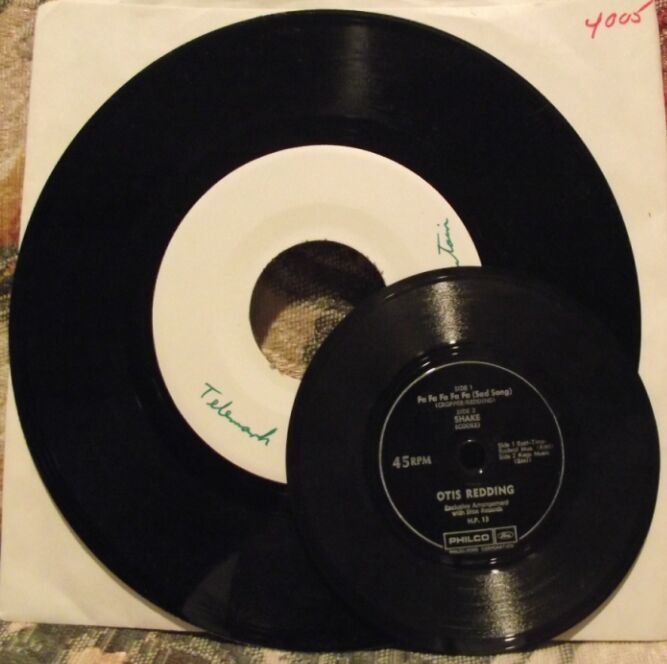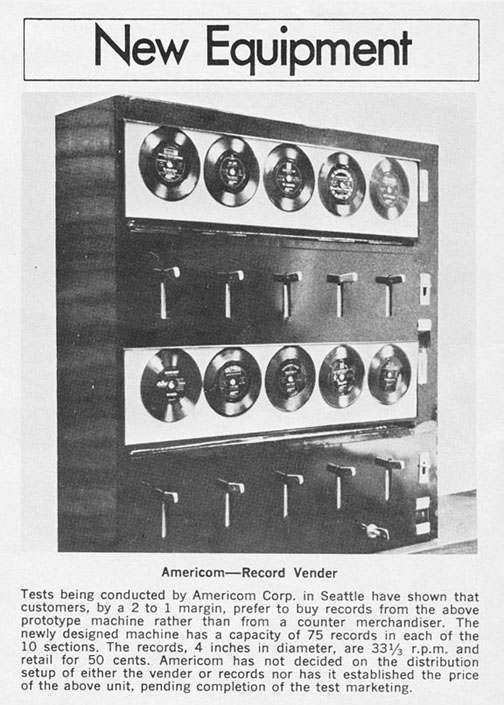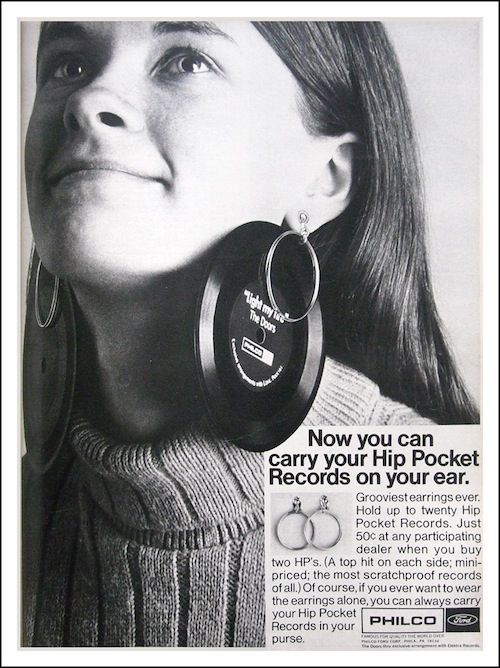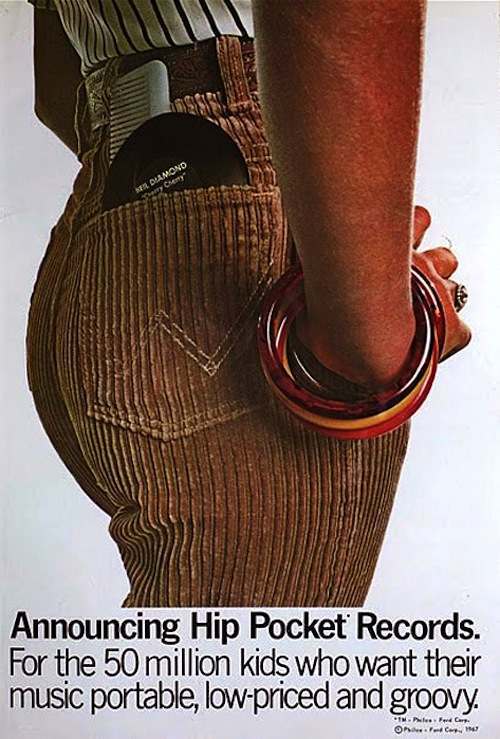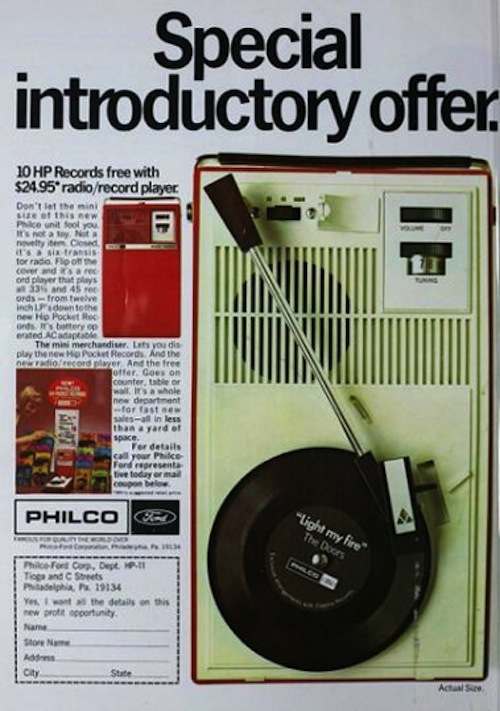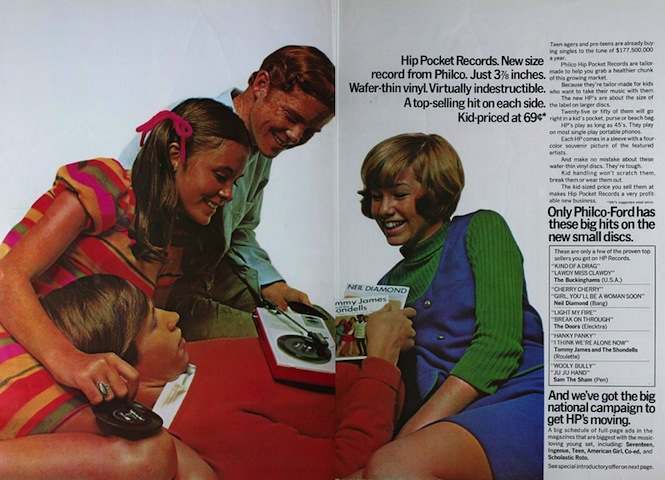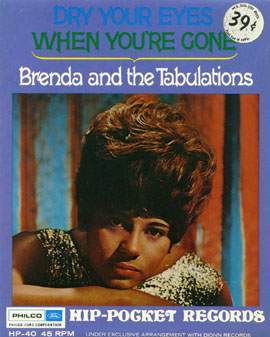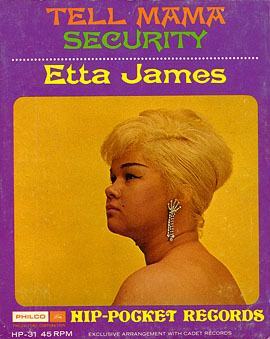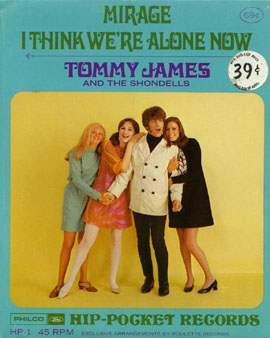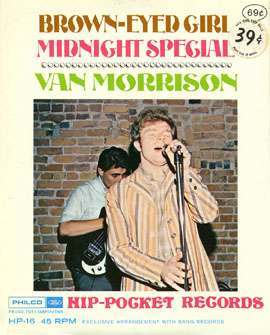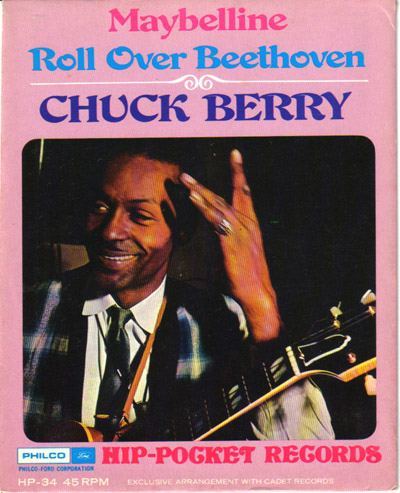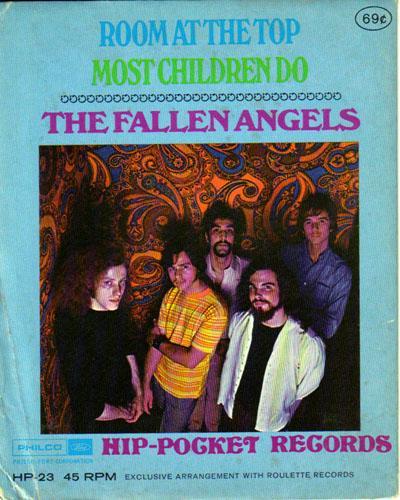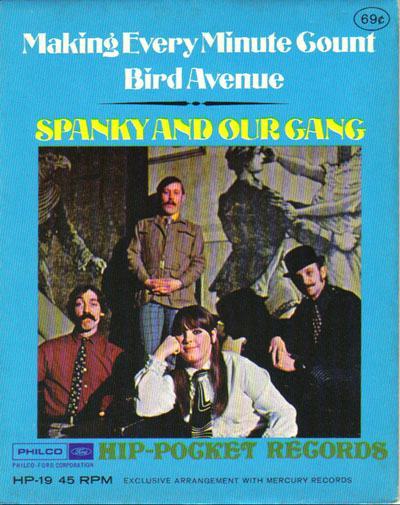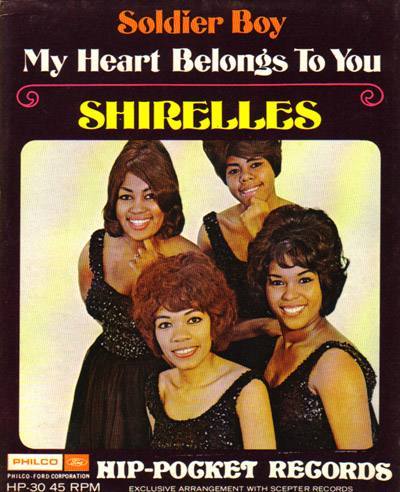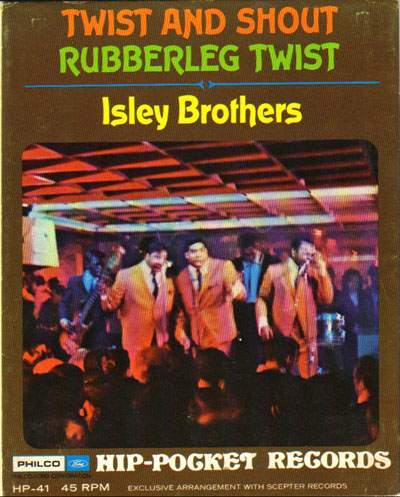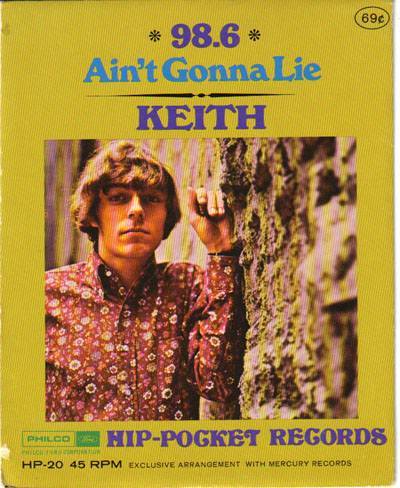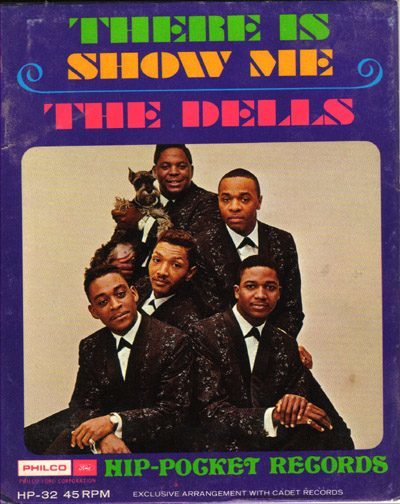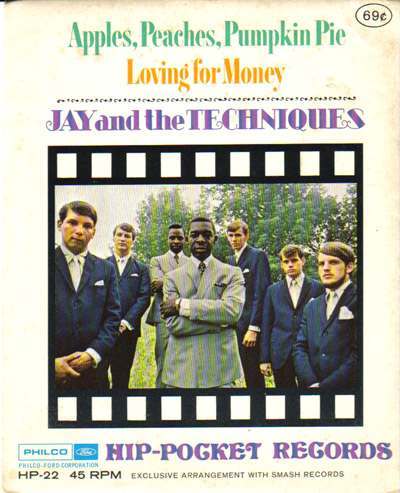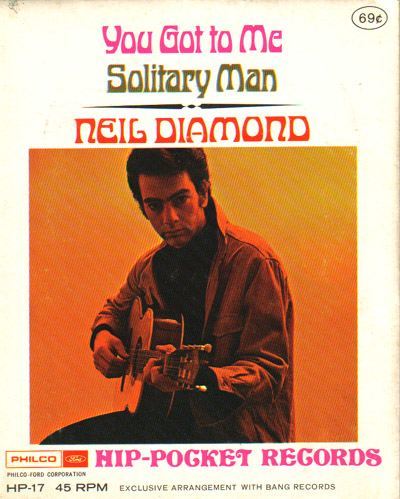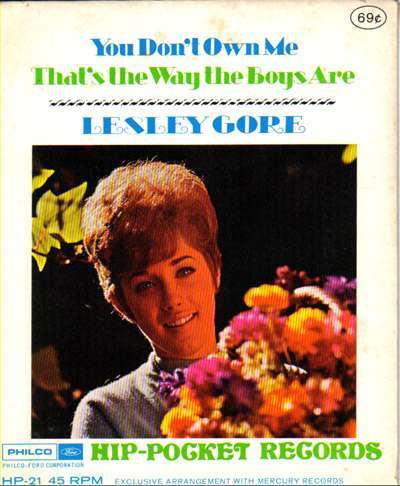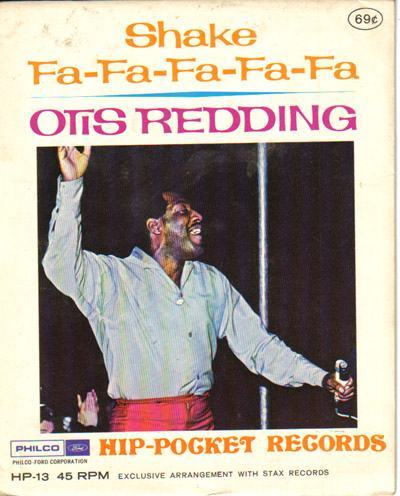In 1967 Philco, the electronics division of the Ford Motor Company, introduced Hip Pocket Records, portable vinyl discs with a song on each side. They cost just 69 cents at Ford dealers and Woolworth’s stores.
Introduced in the mid ’50s, Chrysler’s automobile record player (which took special 7″ discs that revolve at 16 2/3 rpm) was struggling to catch on.
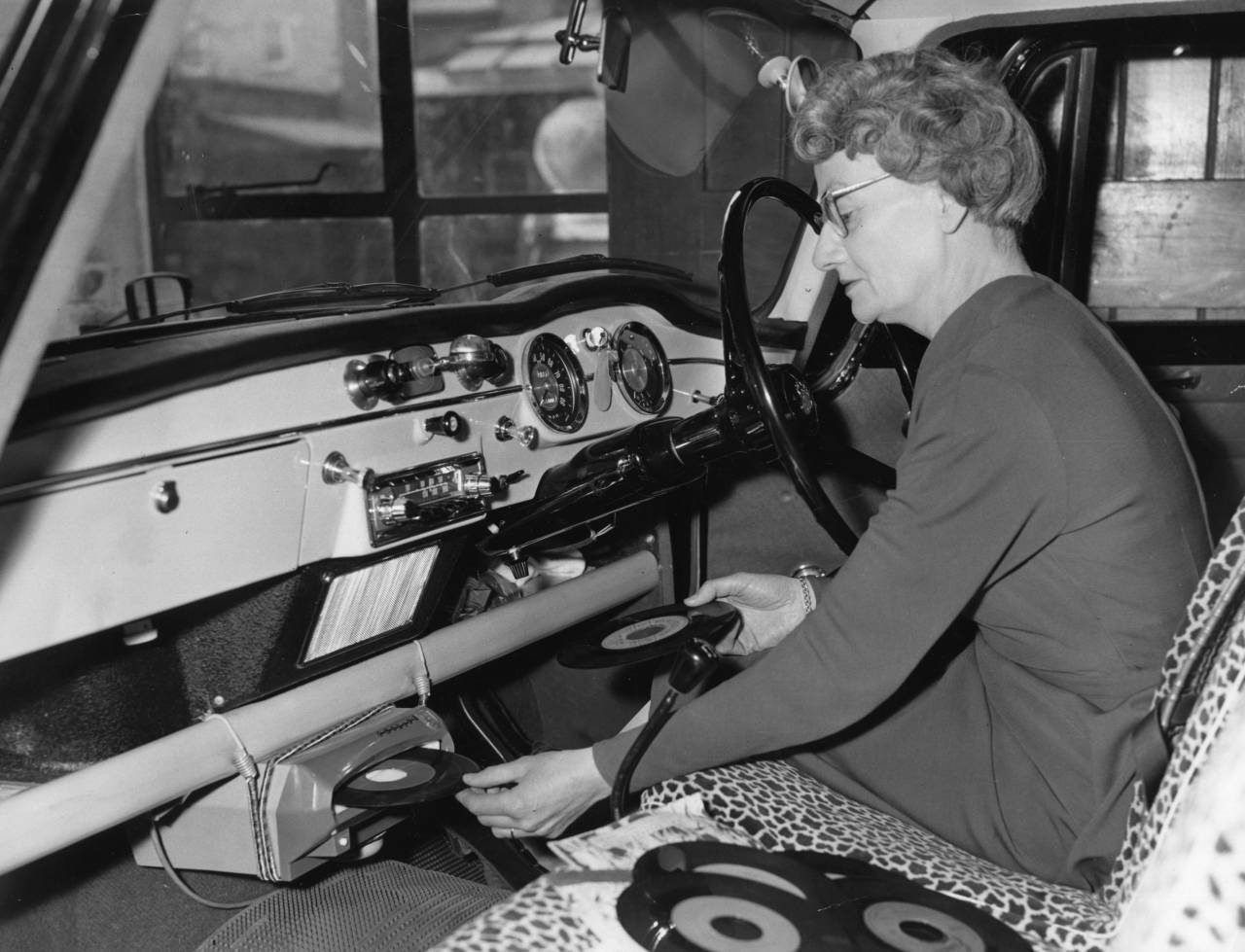
Mrs Batt inserting a record into the front of her in-car record player. The music is fed into the car radio speaker system. (Photo by Fox Photos/Getty Images)
As you can imagine, it simply wasn’t that practical to have rigid 7″s floating free in the glove compartment. So up stepped Philco, a division of the Ford Motor group, to develop a smaller, bendier alternative. Launched in 1967 – 4″ in diameter, flexible and able to be played at 45rpm – the Hip Pocket Record was born.
With Atlantic, Mercury and Roulette on board, the one-sided Hip Pocket Records contained two Top 40 tracks and cost 69 cent at Woolworth from the likes of Otis Redding, Van Morrison and Aretha Franklin… rival manufacturer the Americom Company’s Pocket Disc series offered a cheaper, more accessible alternative (available at vending machines around the country). They also managed to strike a deal with Apple Records’ to get a number of Beatles hits pressed to Pocket Disc.
This was, in part, due to the fleeting nature of their popularity. By 1969, the development of the compact cassette and ultimately the Sony Walkman put pay to the pocket-sized flexi-disc and its short-lived dream of a portable vinyl for the world. Now no more than a footnote in the history of music, these little oddities and their amusing advertising campaigns do have a certain naïve charm, and we’ve compiled the best of them into a bite-size gallery below.

Some discs were offered free as part of promotions for Gleem toothpaste or Head & Shoulders – via
I was an engineer at Philco-Ford at the time they introduced this innovation in the late 1960s. It was one of many failed (or, more precisely, stupid) ventures they engaged in for the consumer market. Problem #1: these “hits” had already come and gone from the charts, so why would anyone buy them even if they didn’t have them already in a standard format? Problem #2: try putting them in your hip pocket and then sitting down! Guess what happens? Problem #3: the diameter was so small that they couldn’t be played on standard record changers (they did have a standard center hole). Since the grooves extended into the area normally occupied by a standard label, the changers would eject before the record was finished. Philco, in their brilliance, offered a phonograph which would play these records. If memory serves me, it had a tiny turntable (small diameter, that is), but a tone arm long enough to play 12″ LPs. THe whole enterprise was misbegotten, and the products were withdrawn from the market quickly.
Chuck Miller has more:
Between 1967 and 1969, Philco/Ford produced over 40 different titles…
Initially, Philco/Ford got their music from three record companies – Atlantic, Mercury and Roulette, as well as their subsidiary labels like Bang and Atco. Smaller labels joined up in 1968, including Scepter, Double Shot, Phil-LA of Soul and Mala. They even produced a specially-designed phonograph (the Philco Miniature Radio Phonograph, model S-1379GR, with built-in AM radio, 10″ long when closed, 12″ with handle extended, capable of playing Hip Pockets as well as standard 45’s and 33’s).


